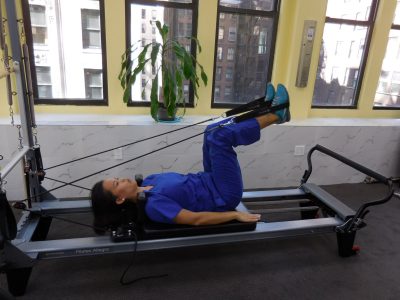 Physical therapy, which began its current form around 1813, is a method for people to rehabilitate from a variety of injuries that include
Physical therapy, which began its current form around 1813, is a method for people to rehabilitate from a variety of injuries that include
- Pain – This can fall into one of two categories: chronic or acute. Chronic is pain that lasts a long time while pain that quickly goes away is acute. Chronic pain can be caused by anything from arthritis to cancer.
- Cartilage damage – People can sustain cartilage damage from anything from a fall to wear and tear over the years.
- Arthritis – While there are over 100 types of arthritis, physical therapists usually help people with osteoarthritis, which happens as one ages, and rheumatoid arthritis, which is an autoimmune condition.
- Gait disorders – The simple act of walking can show a physical therapist a lot about is going on with their patient. They can discern if something is going on neurologically.
- Physical impairments – Physical therapists work with patients who have these impairments that can occur for a number of reasons, including cardiopulmonary, endocrinological, musculoskeletal, and neurological.
The physical therapist undergoes a rigorous educational program that usually culminates in their receiving a Doctor of Physical Therapy degree. The program usually lasts three years or so.
Once the physical therapist has graduated, they then do a residency program for about a year and then they become licensed – with some choosing to pursue an area to specialize in.
Patient Objectives
The main goal of a physical therapist is to help patients regain the ability to move, whether from injury or surgery. They do this by looking at the patient’s previous medical history and also incorporate diagnostic things like CT scans, X-rays, and MRIs.
They don’t just rely on those reports and records, though. It’s important that they gauge with their own eyes what the patient can and cannot do. They may use their own instruments to do this and incorporate that into their plan.
The physics therapist has a multitude of things to help their patients achieve their objectives, including machines that can move the patient’s body parts around, gym equipment, and also manipulate the patient’s joints around with their own hands.
This is not just a reactive field – it can be a preventative one as well, since the physical therapist can work on exercises that can strengthen the area and keep any relapses from occurring in the future.
Methods of Physical Therapy
There are several different ways that a physical therapist can help a patient rehabilitate themselves. They include:
- Electrotherapy – This is a method that uses electricity to stimulate the muscles and have them contract. This can help patients who are unable to move independently. People can also use this for strength training.
- Kinesiology – This is the study of body movements. While other specialties, like biomechanics, can use this, physical therapists utilize this for helping their patients get motion back.
- Exercise prescription – Physical therapists create a plan of exercise for their patients – often when they have shown they can do them on their own without needing the physical therapist’s aid
- Shockwave modality – While doctors can use this to help patients break up extremely painful kidney stones, this method can also be useful for conditions like tennis elbow, Achilles tendinitis, and plantar fasciitis.
- Joint mobilization – This is usually when the physical therapist moves certain joints of the patient around. It’s usually done for therapeutic reasons. This can also be done to the patient’s spine.
Keys To Successful Physical Therapy
One thing that can really help a patient get through the process of physical therapy is to have an excellent rapport between the physical therapist and the patient.
The physical therapist needs to clearly outline what needs to be done to reach the goal of recovery. They need to be optimistic that the patient will achieve any benchmark or even exceed it.
Having a situation where the physical therapist views each patient through the lens that they are a unique individual can greatly benefit both the trainer and the patient avoid discouragement from what might seem rote or repetitive at times.
When it comes to getting results, the staff at Empire Physical Medicine & Pain Management gets accolades from all their patients. They work alongside them to ensure that they get back to where they were prior to their injury or surgery. They also hire highly-knowledgeable people that possess impeccable interpersonal skills. Give them a call at 646-665-7109.
Published By:
Empire Physical Medicine & Pain Management
7 W 45th St floor 9,
New York, NY 10036
Phone: (646) 665-7109
Website: https://manhattanpainrelief.com





